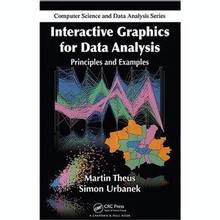Interactive Graphics for Statistics Principles and Examples
Schonlau Matthias Staff
Éditeur : CRC PRESS
ISBN papier: 9781584885948
Parution : 2009
Code produit : 1134641
Catégorisation :
Livres /
Science /
Mathématique /
Mathématiques
Formats disponibles
| Format | Qté. disp. | Prix* | Commander |
|---|---|---|---|
| Livre papier | En rupture de stock** |
Prix membre : 98,75 $ Prix non-membre : 103,95 $ |
*Les prix sont en dollars canadien. Taxes et frais de livraison en sus.
**Ce produits est en rupture de stock mais sera expédié dès qu'ils sera disponible.
Description
This title presents powerful tools for EDA. "Interactive Graphics for Data Analysis: Principles and Examples" discusses exploratory data analysis (EDA) and how interactive graphical methods can help gain insights as well as generate new questions and hypotheses from datasets. It includes fundamentals of interactive statistical graphics. The first part of the book summarizes principles and methodology, demonstrating how the different graphical representations of variables of a dataset are effectively used in an interactive setting. The authors introduce the most important plots and their interactive controls. They also examine various types of data, relations between variables, and plot ensembles.Case studies illustrate the principles. The second section focuses on nine case studies. Each case study describes the background, lists the main goals of the analysis and the variables in the dataset, shows what further numerical procedures can add to the graphical analysis, and summarizes important findings. Wherever applicable, the authors also provide the numerical analysis for datasets found in Cox and Snell's landmark book. You can understand how to analyze data through graphical means. This full-color text shows that interactive graphical methods complement the traditional statistical toolbox to achieve more complete, easier to understand, and easier to interpret analyses.























